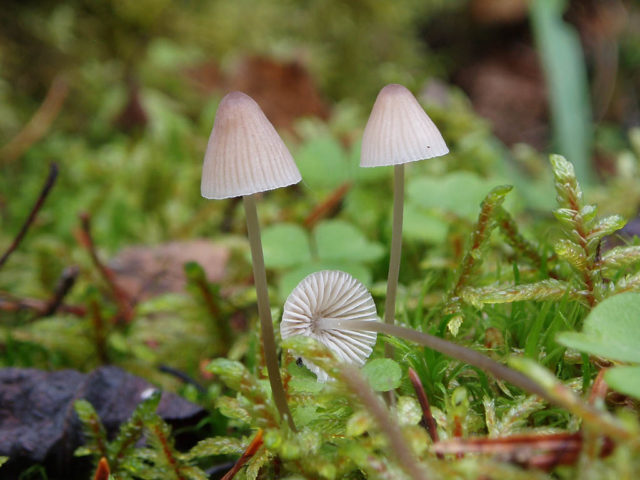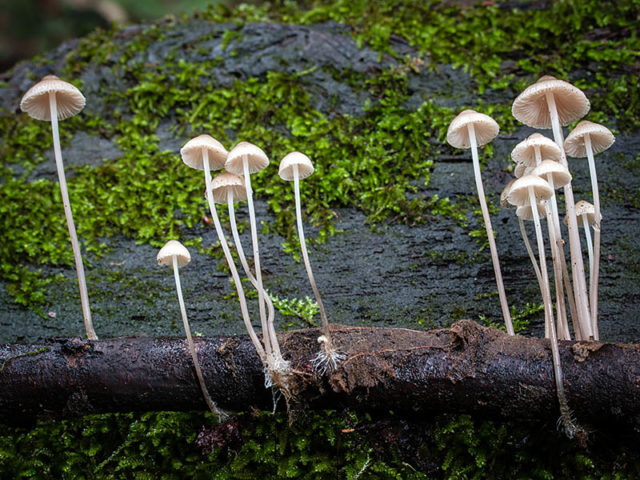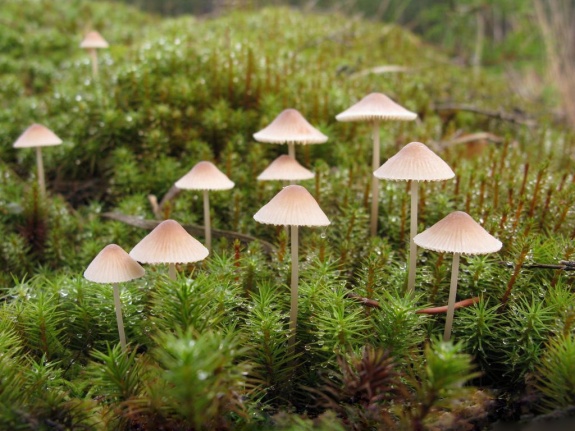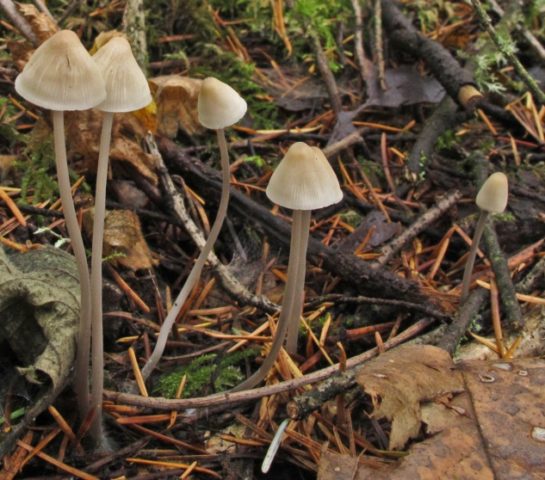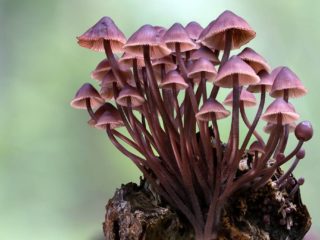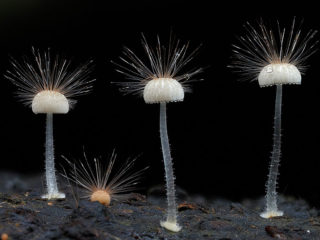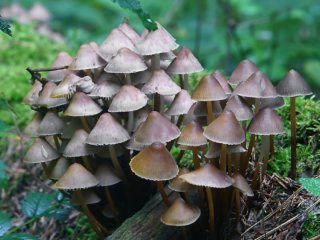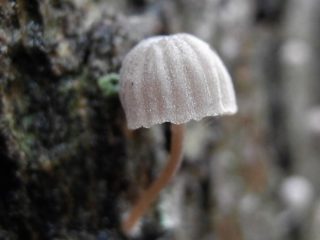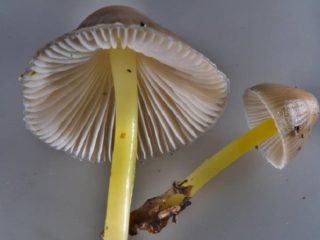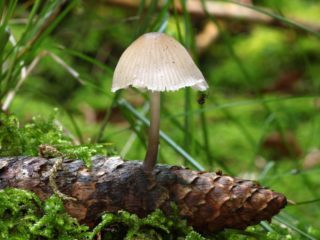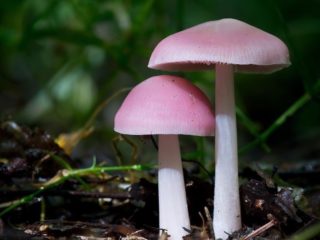Content
When collecting mushrooms, it is very important to correctly determine which forest inhabitants are safe and which are inedible or even poisonous. Mycena filopes is a commonly found mushroom, but not everyone knows what it looks like and whether it is safe for humans.
What do Mycenae filamentosa look like?
Mycena filamentosa is a representative of the Ryadovkov family, which includes about 200 species, which are sometimes very difficult to distinguish from each other.
The hat can be shaped like a bell or a cone. Its dimensions are quite small - the diameter rarely exceeds 2 cm. The color varies from gray or dark brown to white or beige-grayish. The color intensity decreases from the center to the edges. In dry weather, a characteristic silvery coating can be seen on the surface.
The hat has the property of being hygrophanous - it swells when exposed to moisture, and depending on the weather, it can change colors.
The hymenophore in Mycena filamentosa is of the lamellar type; it is a part of the fruiting body where an accumulation of spore powder is located. The number of spores that the fungus can produce directly depends on its development. In the filamentous variety, it is covered with adherent plates - outgrowths connecting the lower part of the fruiting body with the upper. The plates are 1.5-2.5 cm long, convex in shape (sometimes with teeth). Their color can be pale gray, beige or light brown. White spore powder.
Threaded mycena got its name due to its very thin stalk. Its length is usually 10-15 cm, and its thickness is only 0.1-0.2 cm. It is hollow inside with even smooth walls. The leg can grow either straight or slightly curved. The surface of the lower part of the fruiting body in young specimens is slightly velvety, but becomes smooth over time. The color at the base is dark gray or brownish, in the middle it is pale gray, and near the cap it is white. The bottom of the leg may be covered with pale hairs or mushroom filaments, which are part of the mycelium.
The flesh of the thread-legged mycena is very thin and tender, and has a grayish-white tint. In fresh specimens it has virtually no odor, but as it dries it acquires a very pronounced odor of iodine.
Many varieties of mycena are very similar to each other. In addition, as they grow, they can significantly change their appearance, which sometimes makes identification difficult. The following species are most similar to Mycena filamentosa:
- Mycena cone-shaped (Mycena metata).Like the thread-legged one, the cap is cone-shaped and beige-brown in color. You can distinguish the cone-shaped one by the pink edges of the cap, as well as the color of the plates, which can be white or pinkish. In addition, it lacks the silvery sheen on the cap that is characteristic of the filamentous variety.
- Mycena bell-shaped (Mycena galericulata). Young specimens of this species have a bell-shaped cap similar to the thread-footed one and a brownish-beige color. The peculiarity of the cap-shaped one is that in the center of the cap there is a pronounced dark-colored tubercle, and over time it takes on an outstretched shape. It also lacks the silvery coating that distinguishes the threadfoot.
Where do Mycena filamentosa grow?
Mycena filamentosa can be found in deciduous and coniferous forests, as well as in mixed thickets. Comfortable conditions for its growth are moss, fallen needles or flying leaves. It also often grows on old stumps or rotting trees. This is due to the fact that the fungus is a saprophyte, that is, it feeds on dead plant debris, thereby helping to cleanse the forest. Most often, mycena filamentosa grows in single specimens, but sometimes small groups can be found.
Distribution area: most European countries, Asia and North America. The fruiting period is from the second half of summer to October.
Mycena filamentosa is included in the list of rare mushrooms of Latvia and is included in the Red Book of this country, but in Russia it is not considered rare.
Is it possible to eat Mycena filamentosa?
At the moment, mycological scientists do not have reliable information about whether Mycena filamentosa is edible; the mushroom is officially classified as an inedible species. Therefore, collecting it is not recommended.
Conclusion
Mycena filamentosa is a small mushroom with a thin stalk, often found in the forests of Russia. Its main task is to absorb dead tree debris. Since there is no data on the edibility of the filamentous variety, it is not recommended to eat it. Due to the similarity of some types of mycena to each other, both harmless and completely inedible, you should be very careful when collecting these mushrooms.
